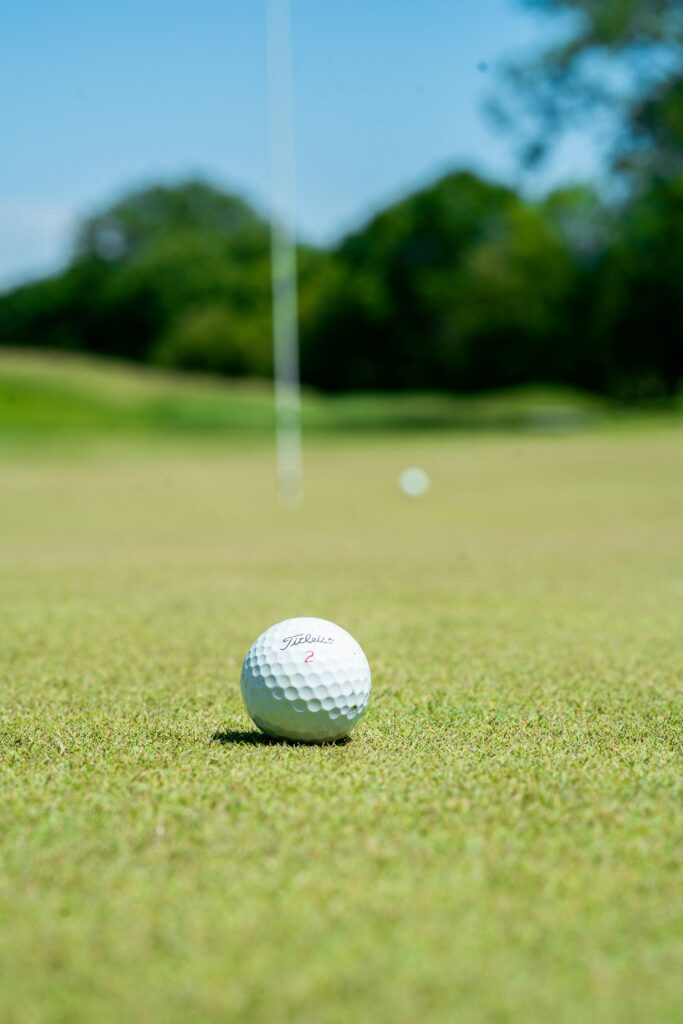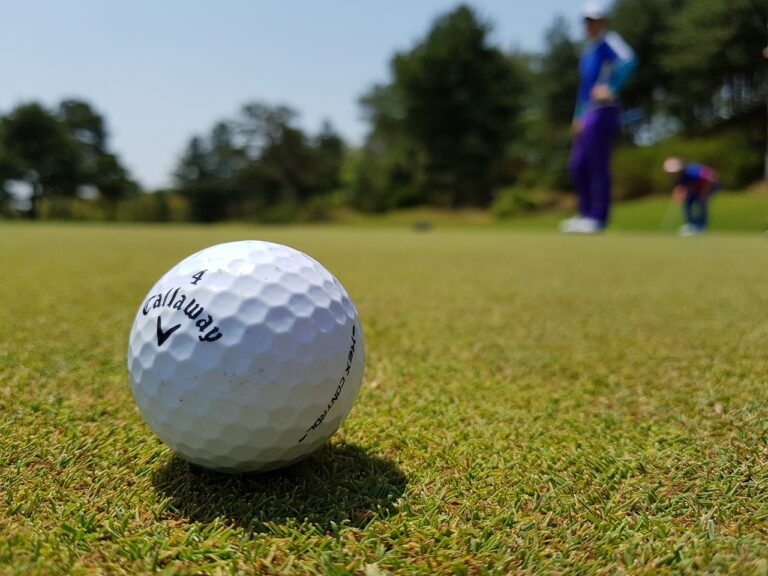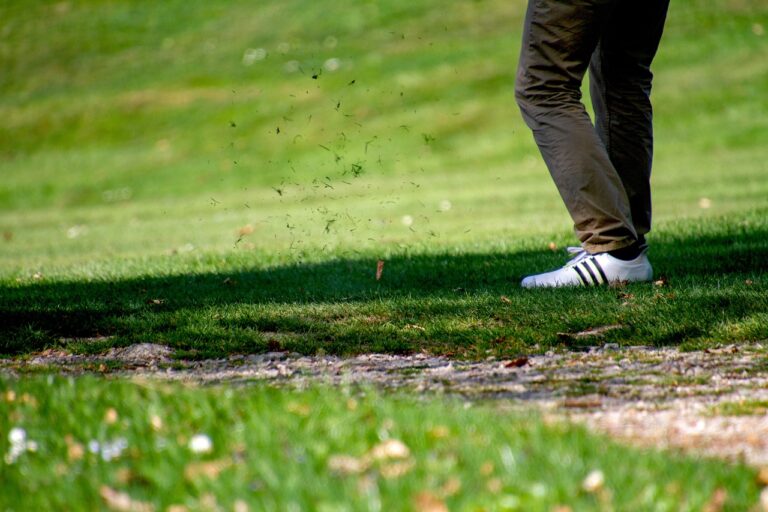Graceful Golf: Essential Stretches for Seniors to Prevent Injuries
Have you ever wondered how to keep your golf game strong and injury-free as you get older? Staying active is indispensable, and for many, golf is more than just a sport—it’s a way to enjoy leisurely time with friends, be out in nature, and stay healthy. But with age, our muscles and joints can become more susceptible to injury, making it essential to incorporate proper stretching and care into your routine. This article focuses on stretches and techniques that can help you stay limber, strong, and injury-free, allowing you to continue enjoying your favorite game without disruptions.

Understanding the Importance of Stretching
Why Stretching Matters
Stretching is sometimes overlooked, but it is a fundamental aspect of any physical activity, including golf. It prepares your body for the physical demands of the game and can significantly reduce the risk of injuries. For seniors, maintaining flexibility and muscle elasticity is crucial for mobility and balance. Regular stretching can also enhance your swing, helping you achieve better performance while safeguarding your body against strains and sprains.
The Mechanics of a Golf Swing
Understanding the mechanics of a golf swing helps to appreciate the significance of stretching specific muscles and joints. A golf swing involves a synchronized movement of multiple muscle groups, with the back, shoulders, hips, and legs playing essential roles. By stretching these areas, you increase your range of motion, which can lead to a smoother and more effective swing. Not to mention, it can help you play longer and with greater comfort.
Common Injuries in Senior Golfers
Awareness of common injuries can further emphasize why stretching should be an integral part of your preparation and cool-down routines. Some prevalent injuries among senior golfers include:
- Lower back pain: Due to the twisting motion of the golf swing.
- Shoulder injuries: From repetitive strain during the swing.
- Elbow pain: Known as golfer’s elbow, caused by overuse.
- Knee issues: Resulting from the stress of walking and twisting motions.
Benefits of Regular Stretching
Incorporating regular stretching into your routine offers multiple benefits:
- Improved flexibility and range of motion: Allowing you to execute a more fluid swing.
- Enhanced balance and coordination: Critical for maintaining a stable stance.
- Reduced muscle stiffness: Minimizing discomfort and promoting better movement.
- Increased blood flow: Helping in the recovery and nourishment of muscles.
Essential Stretches for Senior Golfers
Lower Body Stretches
Your legs play an imperative role in providing a stable base and power during your swing. Here are some effective lower body stretches:
Hamstring Stretch
- How to Perform:
-
- Sit on the ground with one leg extended.
- Bend the other leg so the sole of your foot rests against your inner thigh.
- Gently reach forward towards your toes, keeping your back straight.
- Benefits:
-
- Loosens hamstrings and lower back muscles.
- Increases flexibility in the legs, aiding in better stance and swing motion.
Hip Flexor Stretch
- How to Perform:
-
- Kneel on your right knee with your left foot in front, forming a 90-degree angle.
- Push your hips forward while keeping your back straight.
- Hold the position for 20-30 seconds, then switch sides.
- Benefits:
-
- Targets tight hip flexors.
- Enhances hip mobility, crucial for the rotating motion in a golf swing.
Calf Stretch
- How to Perform:
-
- Stand facing a wall, placing your hands on it.
- Step back with your right foot, keeping it flat on the ground and your left leg bent.
- Lean forward gently to feel the stretch in your right calf. Hold for 20-30 seconds, then switch sides.
- Benefits:
-
- Prevents tightness in the calves.
- Improves walking endurance on the golf course.
Upper Body Stretches
Focusing on your upper body is essential because of the significant role it plays in your swing. Let’s look at some beneficial stretches:
Shoulder Stretch
- How to Perform:
-
- Extend one arm across your body.
- Use the opposite hand to gently pull the arm closer to your chest.
- Hold for 20-30 seconds, then switch arms.
- Benefits:
-
- Reduces tension in the shoulders.
- Enhances shoulder flexibility, critical for a full swing range.
Upper Back Stretch
- How to Perform:
-
- Stand or sit up straight.
- Clasp your hands together with arms extended in front of you.
- Push your hands forward and round your upper back, pushing your shoulder blades apart.
- Benefits:
-
- Alleviates upper back stiffness.
- Improves rotation movement, aiding in your swing.
Triceps Stretch
- How to Perform:
-
- Raise one arm overhead, bending the elbow to reach down your back.
- Use the other hand to gently push the elbow further down.
- Hold for 20-30 seconds, then switch arms.
- Benefits:
-
- Lengthens the triceps muscles.
- Helps with the follow-through part of your swing.
Core Stretches
Your core stabilizes your body and provides balance and power. Strengthening and stretching these muscles can significantly impact your game.
Cat-Cow Stretch
- How to Perform:
-
- Start on all fours with your hands under your shoulders and knees under your hips.
- Inhale as you arch your back (Cow position) and exhale as you round your spine (Cat position).
- Repeat for 10-15 rounds.
- Benefits:
-
- Enhances spine flexibility.
- Alleviates lower back stiffness and pain.
Seated Spinal Twist
- How to Perform:
-
- Sit on the ground with your legs extended.
- Bend one knee and place your foot outside the opposite thigh.
- Twist your torso towards your raised knee, using your arm for support.
- Hold for 20-30 seconds, then switch sides.
- Benefits:
-
- Improves spinal mobility.
- Strengthens the oblique muscles important for swing rotation.
Best Practices for Effective Stretching
Timing and Frequency
It’s essential to stretch both before and after your golf game. Pre-game stretching prepares your muscles, while post-game stretching aids in recovery and reduces muscle soreness.
Pre-Game Stretching
- Duration: Spend at least 10-15 minutes.
- Types of Stretches: Focus on dynamic stretches that involve movement to increase blood flow.
Post-Game Stretching
- Duration: Spend at least 10-15 minutes.
- Types of Stretches: Emphasize static stretches that help in relaxing muscles and aiding recovery.
Breathing Techniques
Proper breathing enhances the effectiveness of your stretches. Ensure you:
- Inhale deeply: As you prepare for the stretch.
- Exhale slowly: As you extend into the stretch, allowing your muscles to relax.
Listen to Your Body
Always pay attention to how your body responds to different stretches. It’s crucial to avoid any form of strain or pain:
- Discomfort is okay: Mild discomfort is normal, but pain is a sign to stop.
- Adjust as needed: Modify stretches to accommodate your comfort level.
Incorporating a Stretching Routine into Your Golf Regimen
Creating a consistent stretching routine tailored to your specific needs can make a significant difference. Here’s a sample plan to get you started:
| Time | Activity | Stretches | Duration |
|---|---|---|---|
| Morning | Prepares body for the day | Dynamic stretches for whole body | 10-15 minutes |
| Before Golf | Warms up muscles for the game | Leg, hip flexors, shoulder, and back | 10-15 minutes |
| After Golf | Aids recovery and reduces soreness | Static stretches for core and whole body | 10-15 minutes |
| Evening | Relaxes muscles before bedtime | Gentle stretches, focusing on problem areas | 10-15 minutes |
Sample Stretching Routine
- Morning Routine:
-
- Gentle stretching to wake up and prepare for the day.
- Focus on full-body movements like the Cat-Cow stretch and shoulder rolls.
- Pre-Golf Routine:
-
- Perform dynamic stretches such as leg swings and arm circles.
- Incorporate specific stretches like the hip flexor stretch and shoulder stretch.
- Post-Golf Routine:
-
- Engage in static stretches: hold each stretch for at least 20-30 seconds.
- Focus on areas that feel tight or sore after the game.
- Evening Routine:
-
- Perform gentle, relaxing stretches to unwind.
- Focus on deep breathing and holding each stretch for an ample period.
Advanced Tips for Senior Golfers
Using Stretching Equipment
Adding tools like resistance bands, foam rollers, and golf clubs can enhance your stretching experience:
- Resistance Bands: Ideal for increasing the intensity of stretches.
- Foam Rollers: Perfect for massaging tight muscles and improving blood flow.
- Golf Clubs: Assist in maintaining balance during stretches.
Working with a Physiotherapist
Consider consulting a physiotherapist to create a personalized stretching plan. They can:
- Assess your mobility: Understanding your specific needs and limitations.
- Provide targeted exercises: Focusing on areas where you need the most support.
Hydration and Nutrition
Maintaining proper hydration and a balanced diet significantly affects muscle function and flexibility:
- Stay Hydrated: Drink plenty of water before, during, and after your game.
- Balanced Diet: Include foods rich in vitamins, minerals, and proteins to support muscle health.
Common Pitfalls and How to Avoid Them
Overstretching
While it might be tempting to push your limits, overstretching can lead to injuries:
- Know your limits: Stretch within comfortable ranges without pushing too hard.
- Progress Gradually: Increase intensity and duration over time.
Skipping Warm-Ups
Jumping straight into your golf game without warming up can increase the risk of injuries:
- Always Warm-Up: Dedicate time to warming up, focusing on dynamic stretches.
Inconsistency
Regularity is key when it comes to reaping the benefits of stretching:
- Create a Schedule: Make stretching a part of your daily regimen.
- Stay Consistent: Follow your routine diligently, even on non-golf days.

Conclusion
Embracing a routine that includes essential stretches tailored for seniors can indeed be a game-changer for your golf performance and overall well-being. These stretches not only prepare your body for the physical demands of the game but also help in maintaining flexibility, reducing the risk of injuries, and enhancing your enjoyment on the golf course. Remember, it’s not just about playing golf—it’s about playing golf gracefully and safely. Incorporate these stretches and best practices into your daily routine, and you’ll not only improve your game but also prolong your golfing years with fewer injuries and more comfort. Here’s to many more rounds of golf, played with ease and joy!







